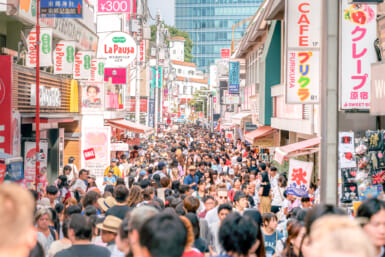Back in 2017, North Korea shocked the entire world by firing a missile over Japan’s northernmost island of Hokkaido. Then, barely two weeks later, they did it again, in case anyone was under the mistaken impression that they were sorry. The projectiles ultimately splashed into the Pacific Ocean without causing any real damage but these unprecedented acts of aggression reminded everyone that while we may joke about Kim Jong-un’s regime, North Korea’s military arsenal is no laughing matter.
Interestingly, though, these weren’t the only frightening things that the country has sent over Japan’s way. There are also the hundreds of North Korean boats filled with decomposed bodies, which have been washing up on Japan’s shores for a few years now.
The phenomenon got especially bad around 2015. Between October and December that year, the Japanese Coast Guard in prefectures along the Sea of Japan discovered at least 34 corpses in wooden fishing boats which had drifted into Japan’s territory. Since most of the vessels had Korean writing on them but weren’t claimed by Seoul, the authorities suspected they must have originated from Kim Jong-un’s communist regime. Over the next few years, things would only get worse.
In 2016, Japanese Maritime Self-Defense Force personnel from the Maizuru district (Kyoto Prefecture) found an overturned ship with eight bodies on board. Two additional human skulls were also found in later searches of the surrounding area. This time, the presence of North Korean currency and cigarettes left little doubt as to where the vessel came from. By next year, the Japanese Coast Guard realized this problem probably wasn’t going away, and what’s worse, they might never know the full extent of it.
For example, Niigata Prefecture, which was hit especially hard by the North Korean tomb-boats in 2017, recorded at least four incidents of beaten-up boats depositing corpses in their shore. However, in one incident, first reported by a staff member of Niigata Airport, a drifting fishing boat was spotted about one kilometer off shore before crashing against a breakwater tetrapod, sinking all the corpses it was carrying. The previous month, Japan reported the discovery of a total of 28 North Korean corpses, but in light of this incident it’s impossible to say how many more sank before reaching shore.
All in all, last year was a record-breaker for Japan receiving North Korean ghost ships, with 104 of them reaching the country in 2017, 44 of which were discovered just in December alone. Some places in Akita and Aomori Prefectures even reported two boats with skeletonized/heavily decomposed remains washing up on their shores on the very same day. This marked a significant rise ever since Japan first started keeping track of these things back in 2013. That year, the total number of intercepted ghost ships was 80.
Interestingly, over the years, more than 40 people have been found alive on the disabled ships, all of whom would only admit to being fishermen before asking to be sent back to North Korea. This has sparked some conspiracy theories about the ghost ships actually being failed attempts by North Korean spies to covertly reach Japan, but the simpler explanation is that these people really are fishermen whose engines broke down. Analyses suggest that if a North Korean vessel did stray too far from the country and go dead in the water, the currents would eventually carry it to northern Japan.
This does make sense – North Korea isn’t exactly a technological utopia, so it’d stand to reason their fishing vessels would lack reliable engines or GPS systems. The advanced state of decomposition of most of the corpses found in Japan also suggests that they’d been out on the sea for prolonged periods of time. And, realistically, North Korea would not have become the tyrannical dictatorship it is today if their spies kept dying off because of stalled boat engines.
So why do so many fishermen take their boats too far out into the sea, betting their own lives on unreliable vessels? Well, after earlier North Korean missile tests, the international community imposed heavy sanctions on the country, making it even harder for Kim Jong-un to feed his citizens. And remember, this happened after some Western visitors were able to secretly photograph North Koreans picking grass to eat in order to stave off starvation. Due to the sanctions, it’s possible that Pyongyang ordered its fishing vessels to bring in bigger and bigger catches, forcing them to risk going out further and further.
In any case, the problem is unlikely to improve any time soon: already this year, a boat with eight corpses was found in January off the coast of Kanazawa.









